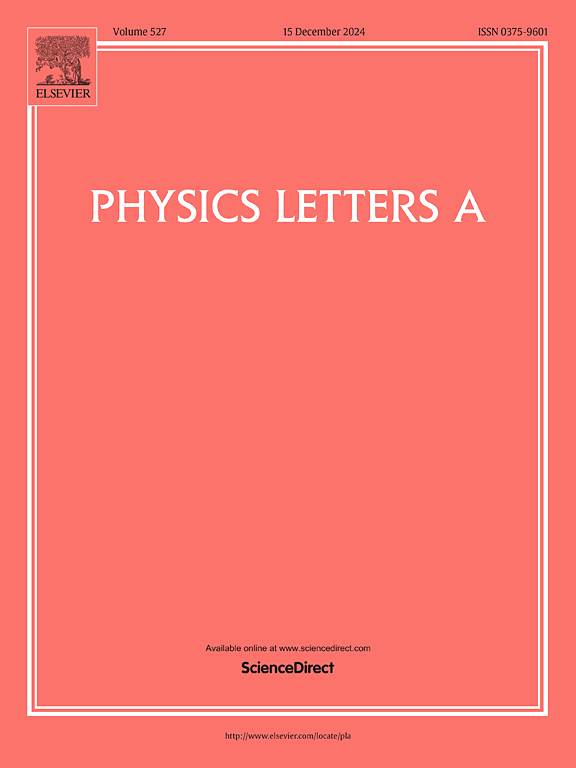双金属烯单层自旋分化轨道杂化析氧催化
IF 2.3
3区 物理与天体物理
Q2 PHYSICS, MULTIDISCIPLINARY
引用次数: 0
摘要
电化学水分解在先进能量转换系统的发展中占有重要地位,但由于析氧反应(OER)动力学缓慢,使其遇到了重大的技术瓶颈。在此,我们提出了一系列双金属烯单层,利用特殊的自旋分化轨道杂化来重新配置它们与反应物的键相互作用,其中磁性Pd位点的半填充3d轨道可以很容易地从邻近的Ag位点剥夺额外的价电子,从而促进电子给能限制速率的中间体。更有趣的是,与传统的块体材料相比,双金属烯表面金属活性位点的数量可以有效地增加,并且由于这种自旋分化的轨道杂化,载流子迁移能力和催化活性得到了有效的优化。这项工作为设计金属基催化剂加速析氧反应打开了一扇新的大门。本文章由计算机程序翻译,如有差异,请以英文原文为准。
Spin-differentiated orbital hybridization at bimetallene monolayers for oxygen evolution catalysis
Electrochemical water splitting holds a vital position in the development of advanced energy conversion systems, but which encounters a significant technological bottleneck from the sluggish kinetics of the oxygen evolution reaction (OER). Herein, we suggest a series of bimetallene monolayers to reconfigure their bonding interaction with the reactants using particular spin-differentiated orbital hybridizations, where the half-filling 3d orbitals at magnetic Pd site can easily deprive an additional valence electron from neighboring Ag site that facilitate an electronic donation to the rate-limiting intermediates. More interestingly, the number of the metal active sites at bimetallene surfaces can be effectively increased in comparison to the traditional bulk materials, and the carrier migration ability and catalytic activity are effectively optimized due to this spin-differentiated orbital hybridization. This work opens a new door to design metal-based catalysts for accelerating oxygen evolution reaction.
求助全文
通过发布文献求助,成功后即可免费获取论文全文。
去求助
来源期刊

Physics Letters A
物理-物理:综合
CiteScore
5.10
自引率
3.80%
发文量
493
审稿时长
30 days
期刊介绍:
Physics Letters A offers an exciting publication outlet for novel and frontier physics. It encourages the submission of new research on: condensed matter physics, theoretical physics, nonlinear science, statistical physics, mathematical and computational physics, general and cross-disciplinary physics (including foundations), atomic, molecular and cluster physics, plasma and fluid physics, optical physics, biological physics and nanoscience. No articles on High Energy and Nuclear Physics are published in Physics Letters A. The journal''s high standard and wide dissemination ensures a broad readership amongst the physics community. Rapid publication times and flexible length restrictions give Physics Letters A the edge over other journals in the field.
 求助内容:
求助内容: 应助结果提醒方式:
应助结果提醒方式:


